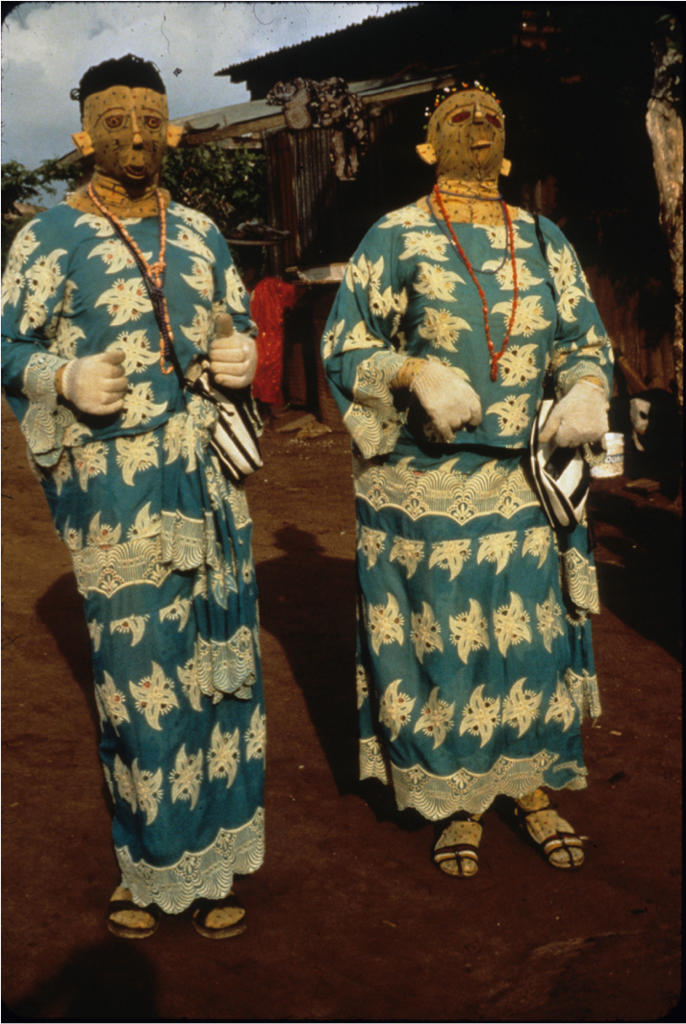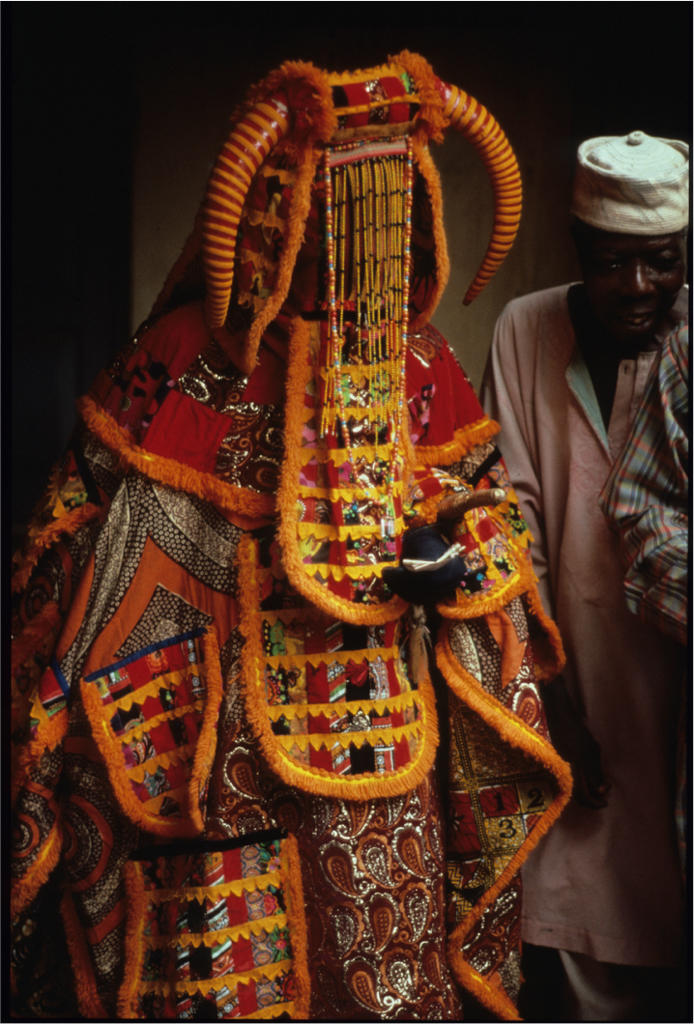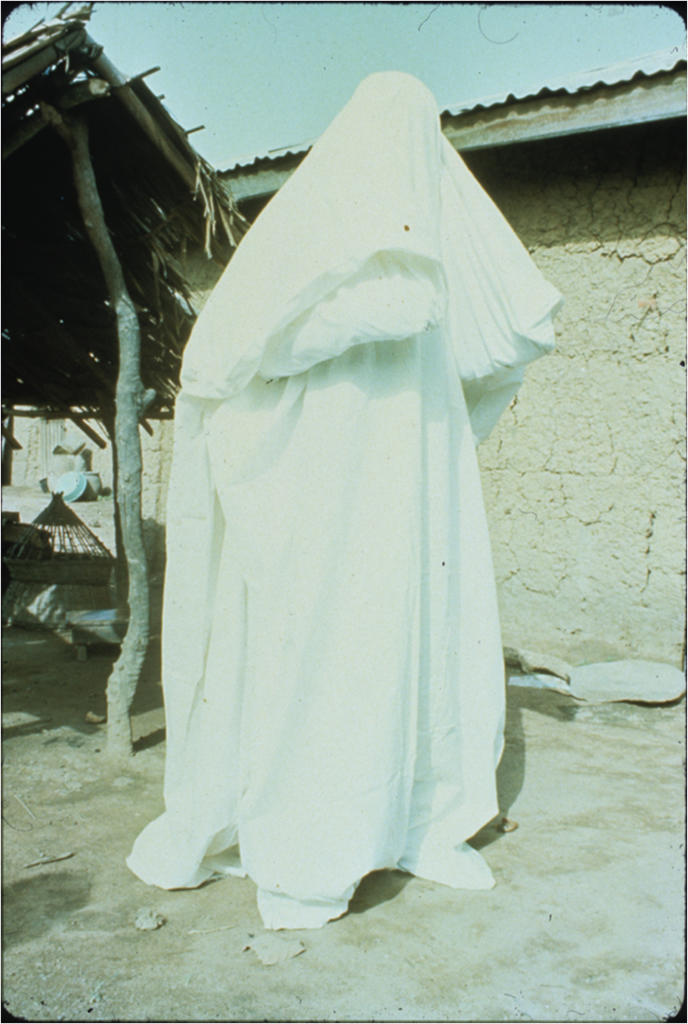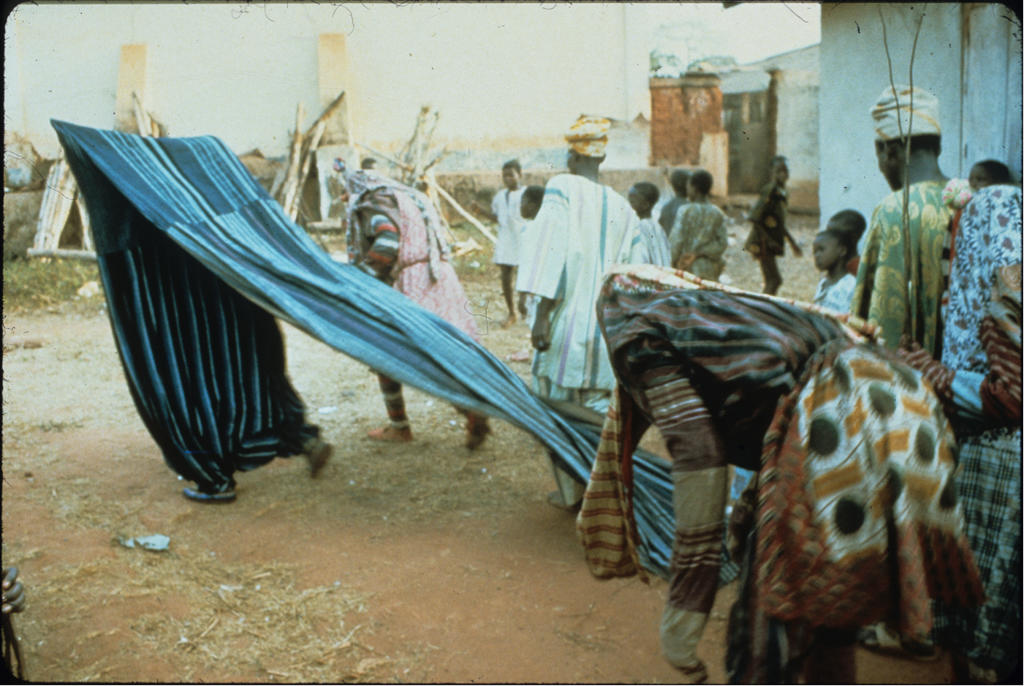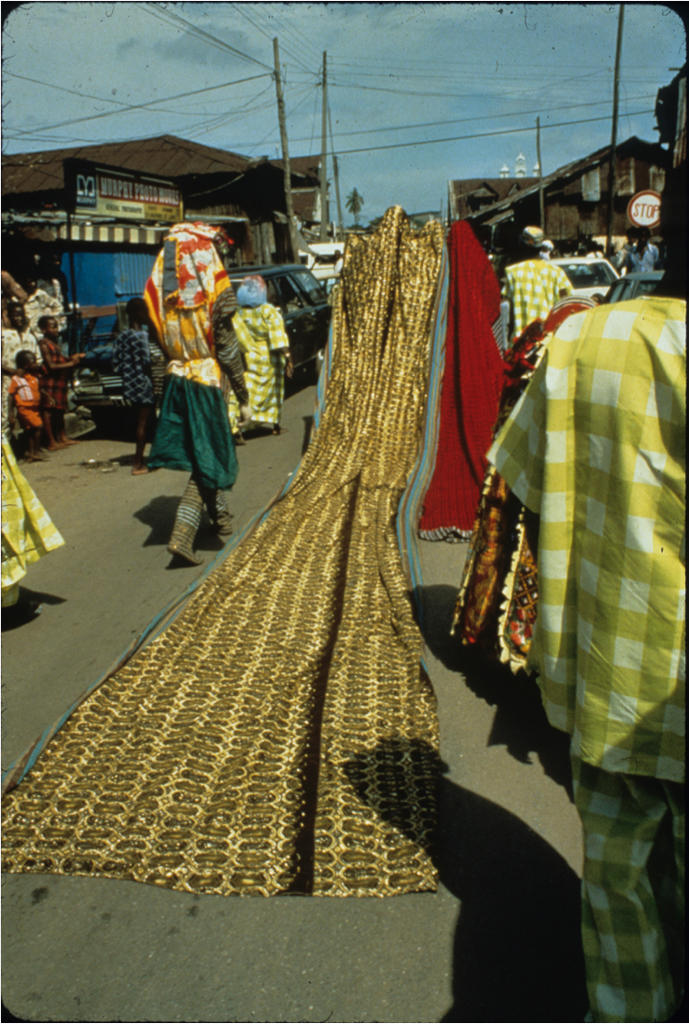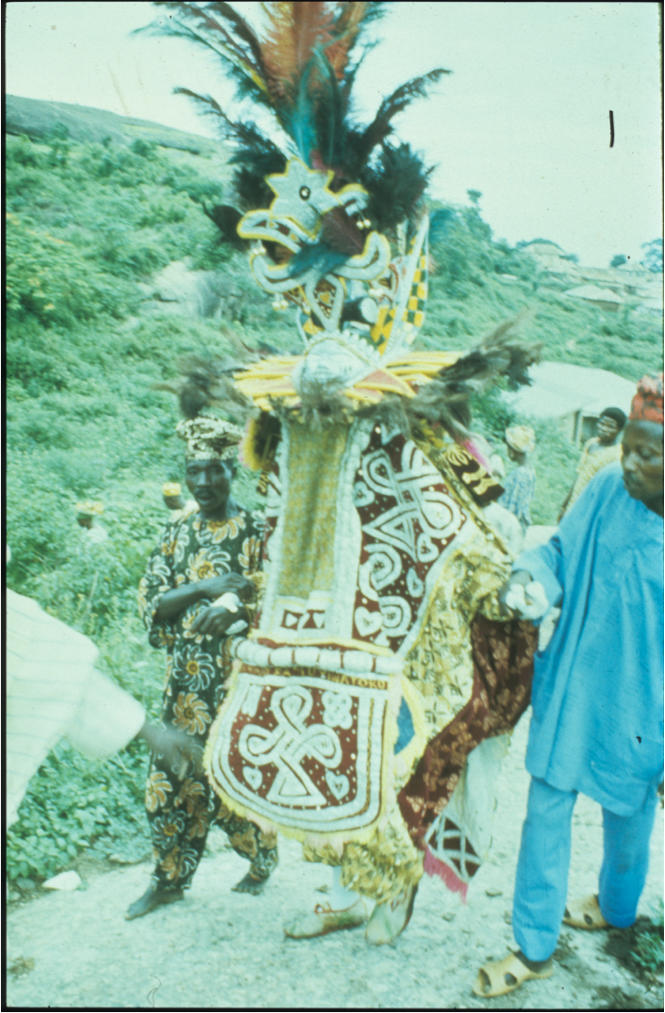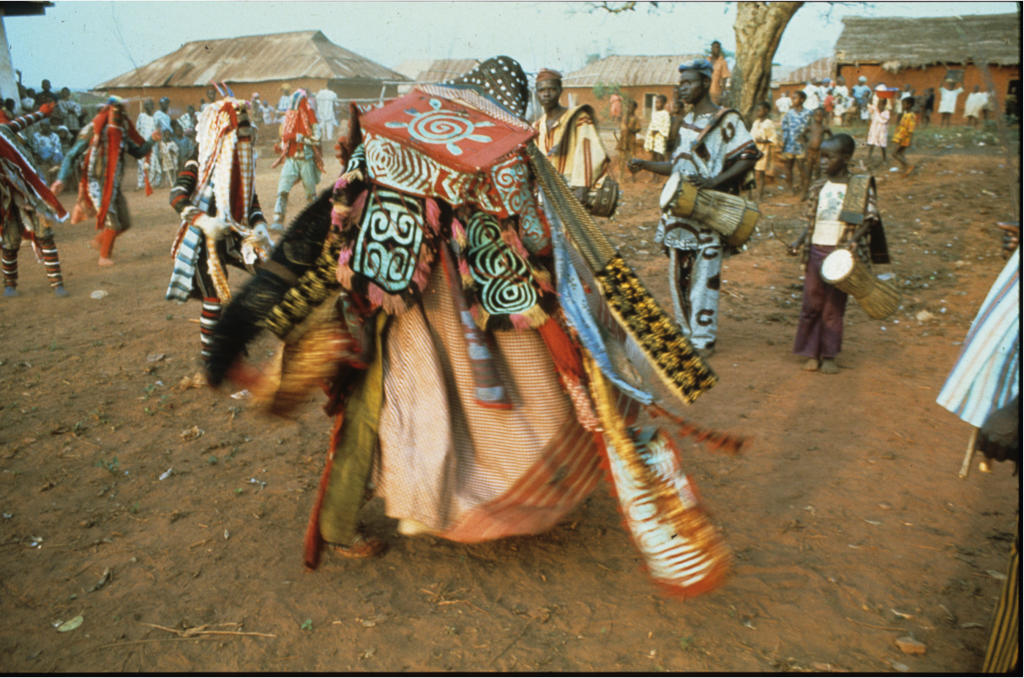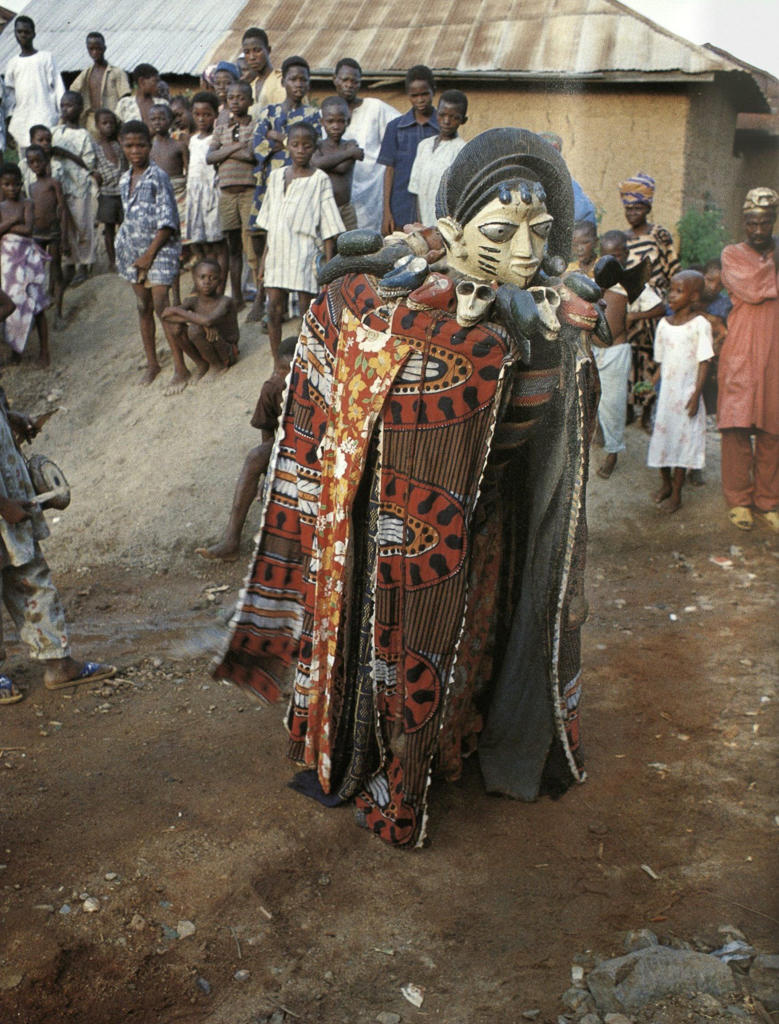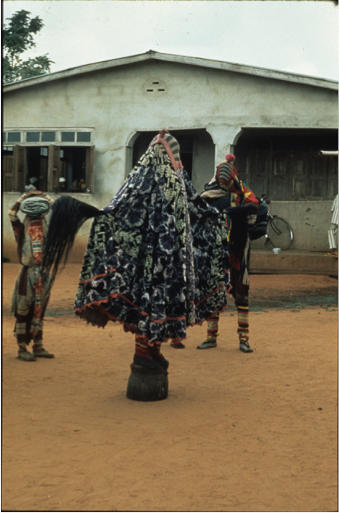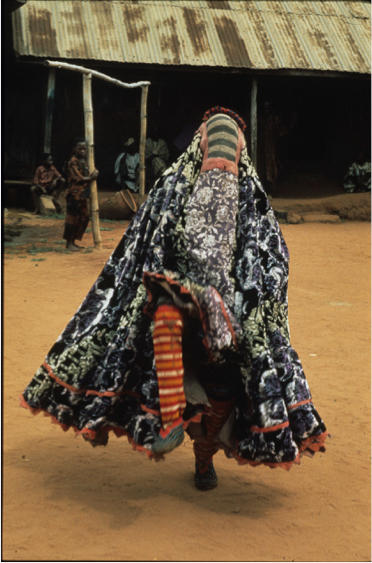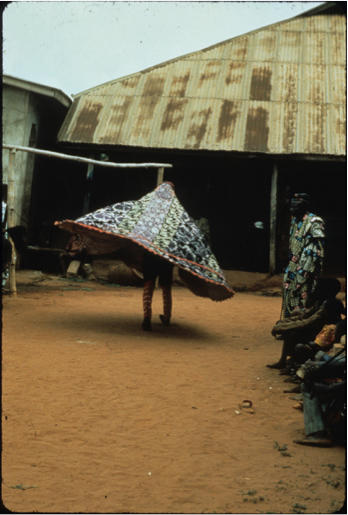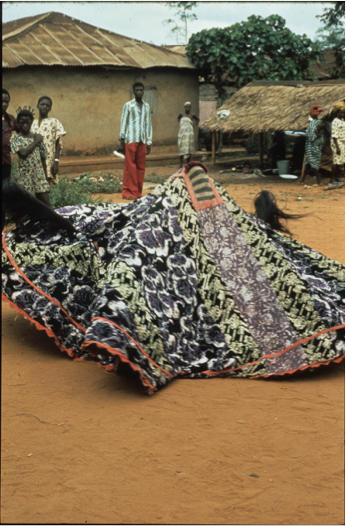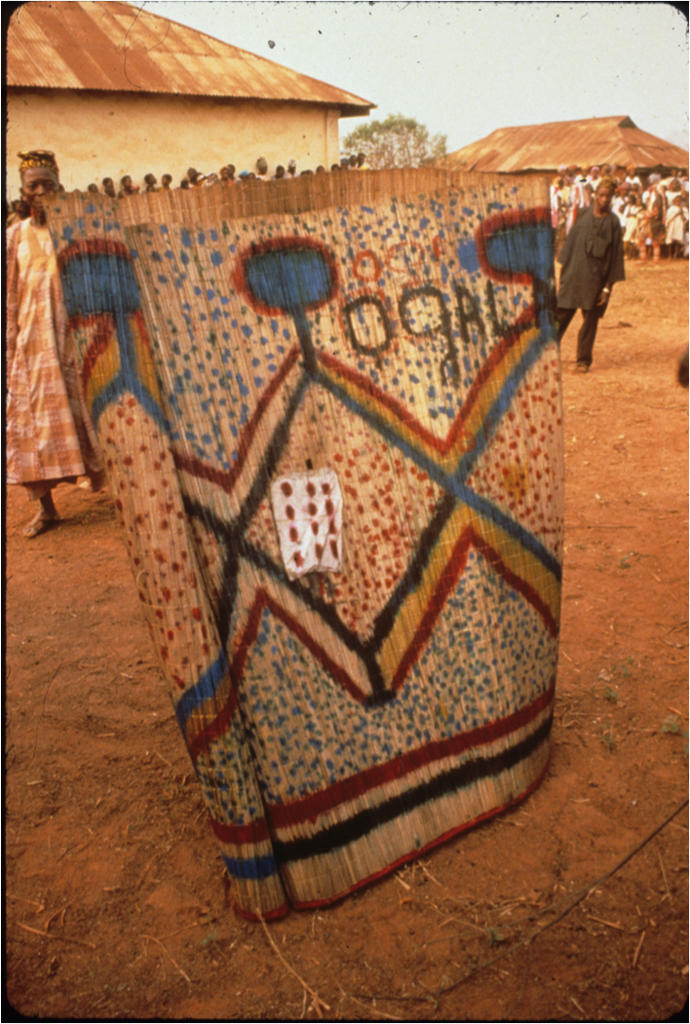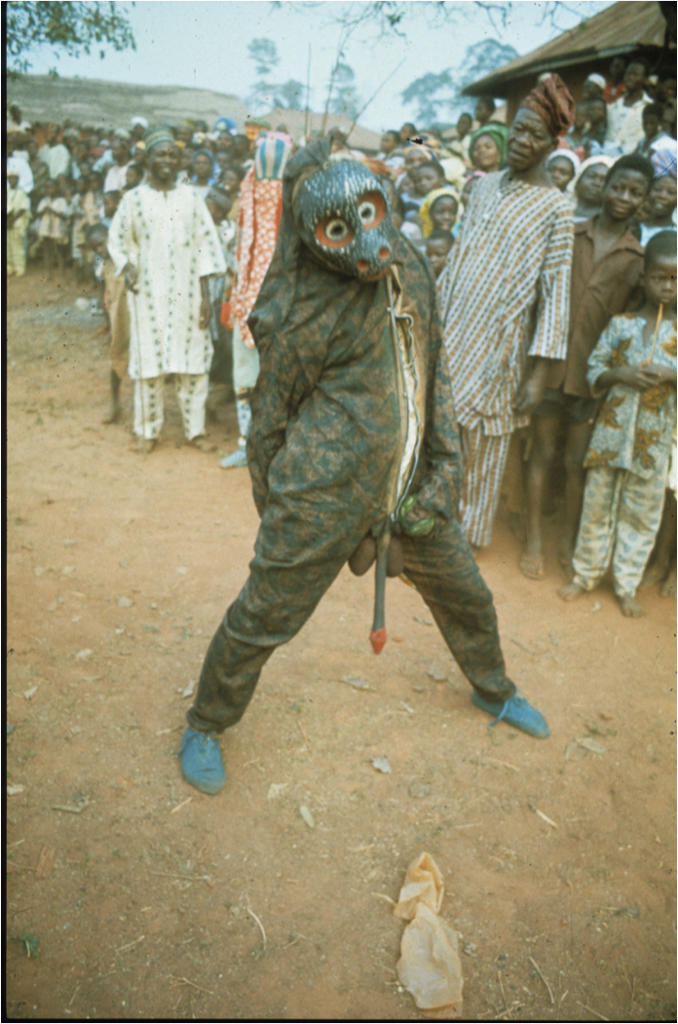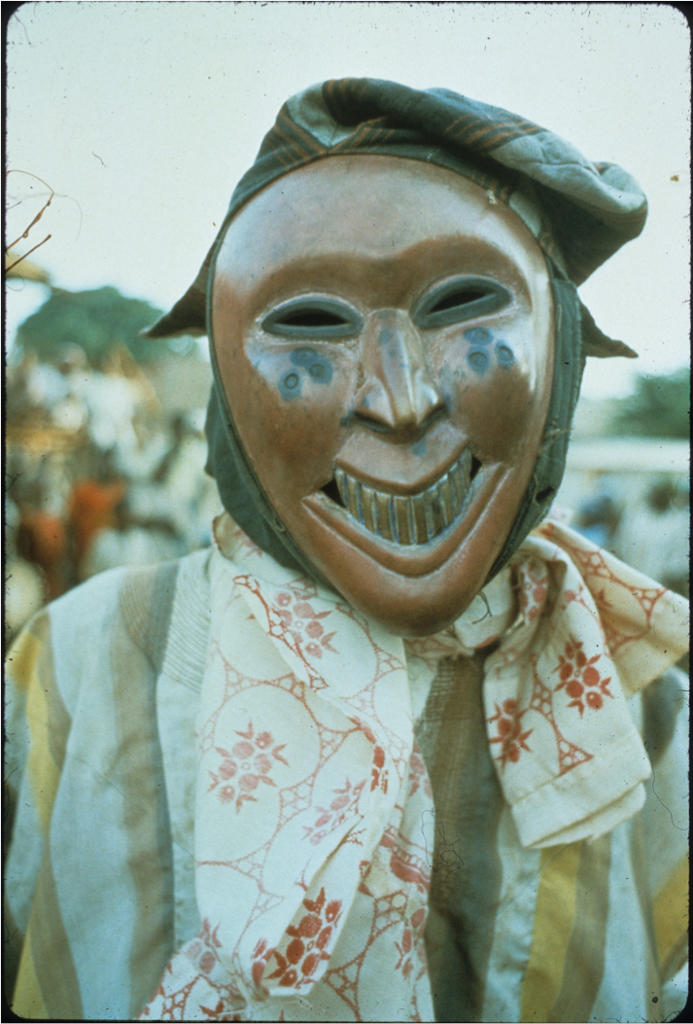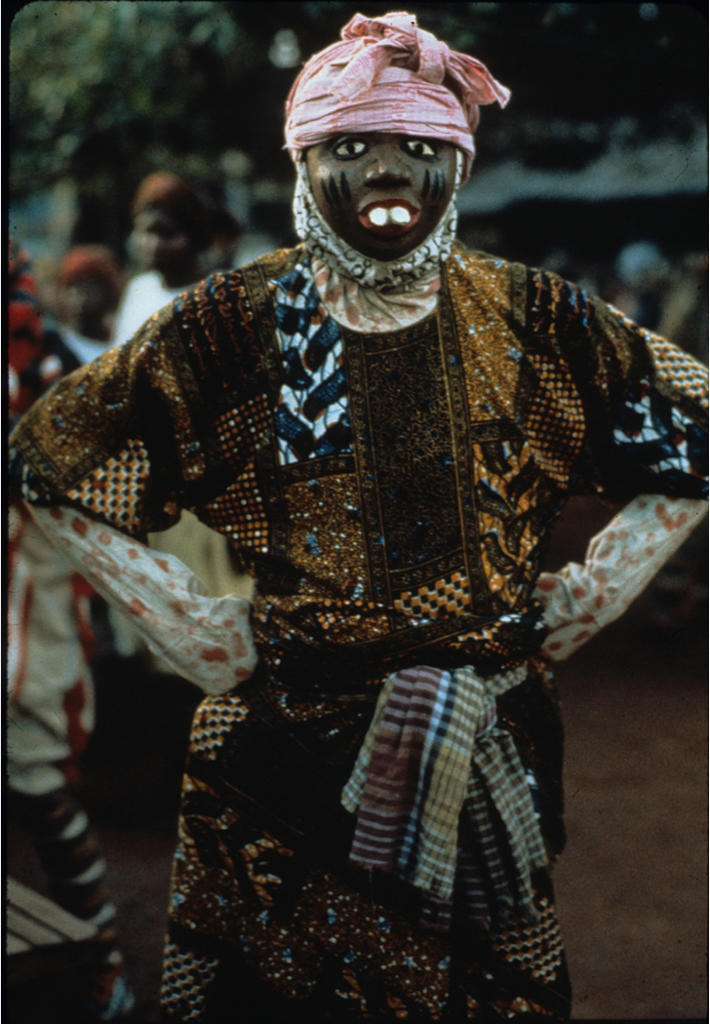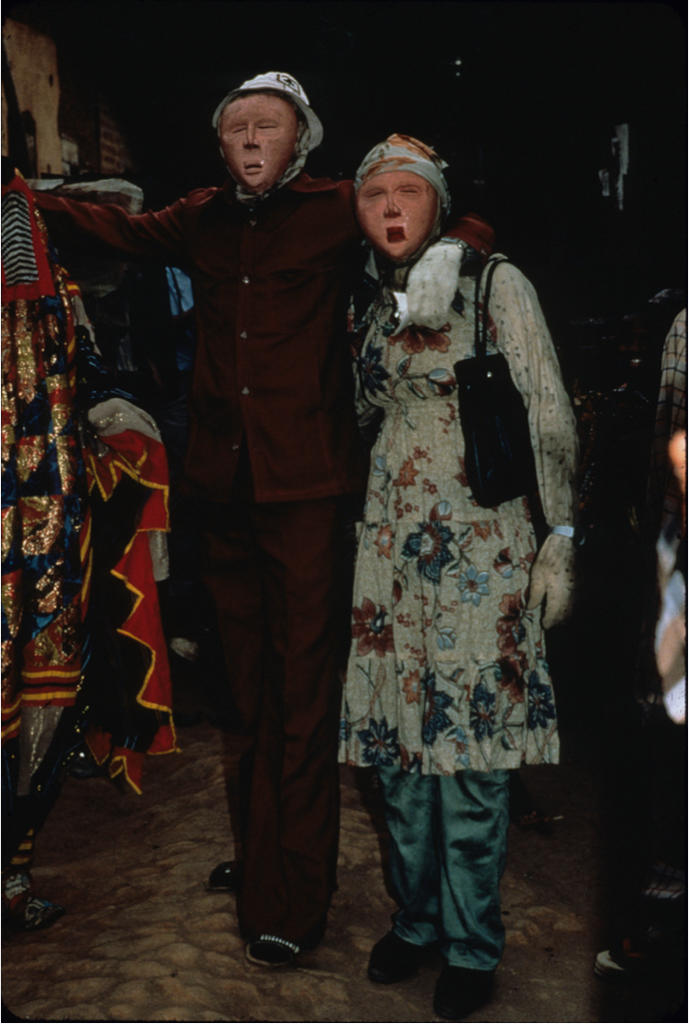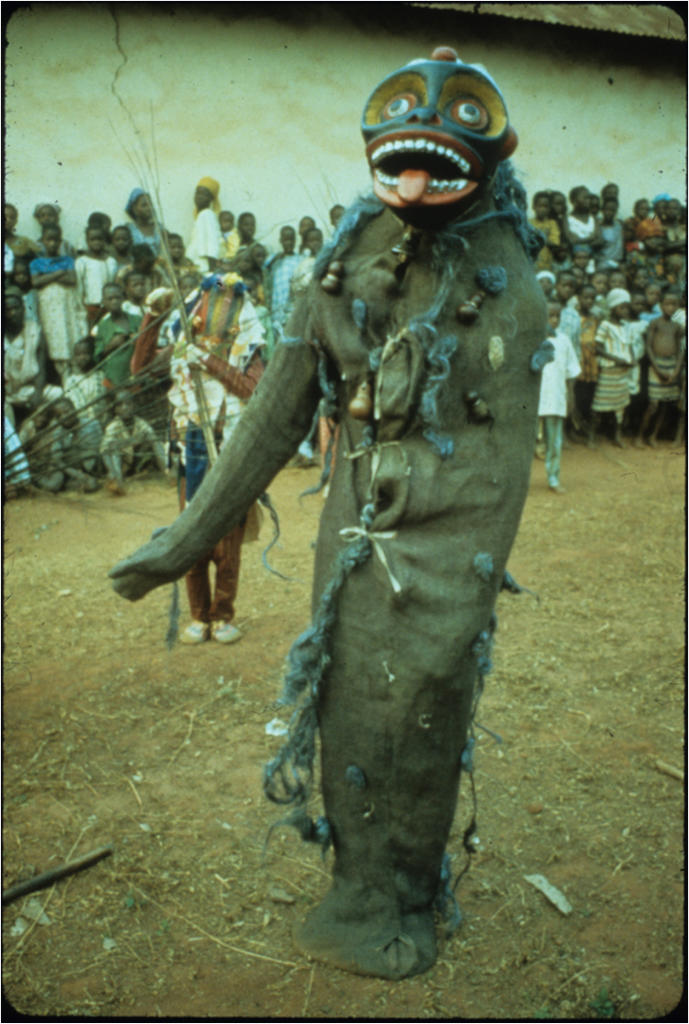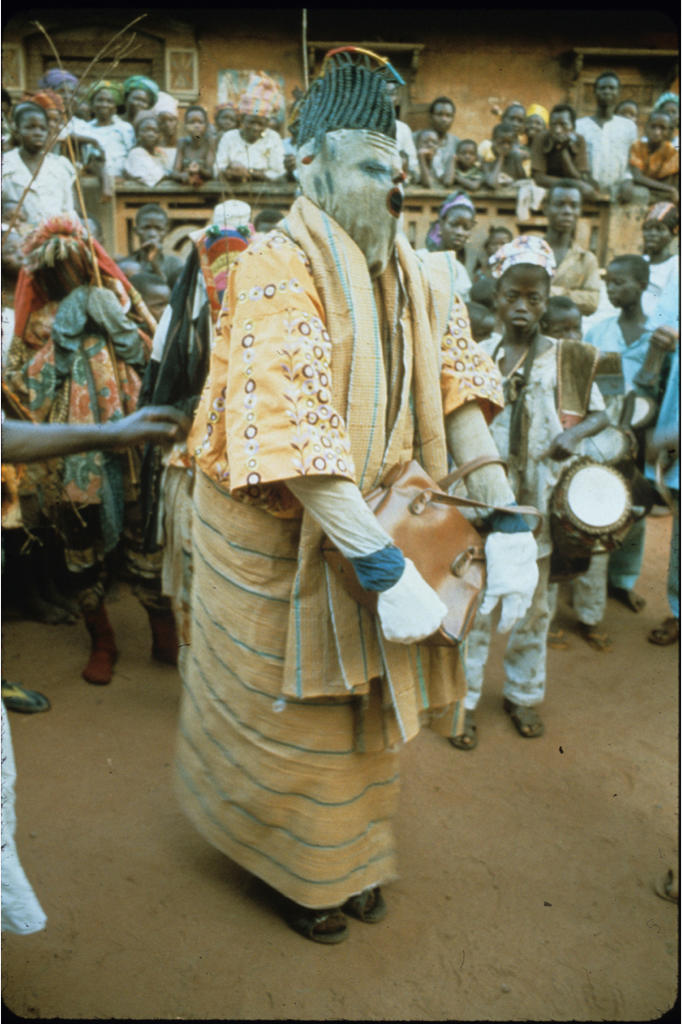For Yorùbá-speaking peoples in West Africa, cloth is equated with their most precious possession, children. The proverb “Omo l’aso èdá” (Children are the clothes of a person) points out that children, like clothes, are what one shows to the world, and one is judged accordingly. Valuable textiles are what the Yorùbá use to celebrate the power and presence of their ancestors in exquisite masquerade ensembles known as Egúngún. Using the unique qualities of textiles—their textures, colors, weight, and flexibility—they create moving (both literally and figuratively) experiences of the spirits of their departed loved ones.
For the Yorùbá, these performances are serious business. At the same time, they are also serious play (eré), for the Yorùbá create elaborate multimedia and multisensorial events that are meant to please and honor ancestors who, like all of us, enjoy homage and respect, as well as a good laugh. Thus many Egúngún ensembles impress with their sumptuous materials and symbols of spiritual power and prestige, while others provoke laughter in their humorous or satiric portrayal of human (and divine) foibles. The Yorùbá strive to put on a good multisensorial spectacle (àwòrán), a party for their departed family and community members. For the Yorùbá, the playfulness and surprise of improvisation are essential for the success of any artistic endeavor, whether object or event. To invite the return of ancestors is to play with forms and ideas in order to make audiences think in new ways about their world: not only about their shared past and imagined future, but about themselves and the conduct of their mortal lives.
The vast majority of Egúngún ensembles are communal, collaborative works of art. They are a labor of love by all family members, male and female. Everyone contributes to the creation of these ensembles. Those who can sew prepare the cloth lappets; those who can carve create wooden headdresses. Those who know how to crochet create the cloth netting that covers the face of the masker. Those who can bead, embroider, or appliqué prepare varied decorations for different parts of the costume. Those who create empowering amulets encase them in cloth, leather, or gourds and attach them to the costume. Those men who can “hear the drum” and dance well perform inside the costume (only men masquerade). Those women who can compose songs and sing well are part of the large chorus that chants the praise poems and historical narratives of the lineage.
A Yorùbá lineage includes the living, the departed, and all those yet to be born or reborn. One type of Egúngún, called Egúngún Àgbà, means “senior/elder Egúngún.” This Egúngún (Fig. 1) probably honors a royal lineage, as indicated by the beaded veil reminiscent of those on royal beaded crowns. In addition to celebrating its royal heritage, this family’s masquerade also honors its hunter and warrior ancestors. Animal horns with spiral patterns crown the headdress. Horns are typically containers for powerful medicines, empowering substances with performative power (ase) that are used to protect and strengthen persons.
Because of the patrilineal basis of most Yoruba-speaking peoples, Egúngún Àgbà usually honor male ancestors while still symbolizing the entire lineage of men and women. But there is an Egúngún masquerade that specifically honors foremothers (Fig. 2). It is not performed as often as the others, but included only on the most important ritual occasions. In contrast with the elaborately embellished multicolored ensembles for male ancestors, the masked embodiment of “our mothers” is simple and completely white. The color white (funfun) evokes a host of ideas—enormous concealed power, or àse, composure, patience, age, wisdom, sanctity, and nurturance. The appearance of ìyá àgbà, the “great ancestral mother,” brings assurances of protection and support.
The following images illustrate a variety of Egungun masquerade types. Photos are by the author unless otherwise noted.
Henry John Drewal
Evjue-Bascom Professor of Art History and Afro-American Studies at the University of Wisconsin-Madison
This article is a revised excerpt from “Whirling Cloth, Breeze of Blessing: Egungun Masquerades Among the Yoruba” in Homegoings, Crossings, and Passings: Life and Death in the African Diaspora, edited by Regennia Williams, 175–206. NJ: Africa World Press, 2011.
